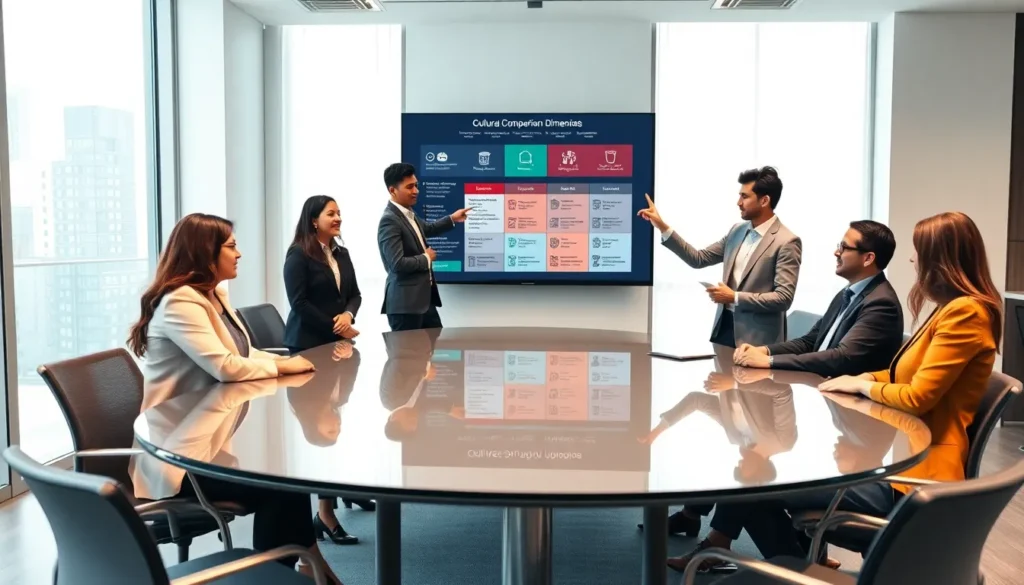In the world of business, goal setting and strategic planning aren’t just buzzwords—they’re the secret sauce that keeps organizations thriving. Imagine trying to navigate a ship without a compass. That’s what it feels like for companies without a clear plan. The level responsible for these vital tasks is like the captain of that ship, steering it toward success while avoiding icebergs of confusion and chaos.
But let’s be honest—goal setting isn’t always a walk in the park. It’s more like a dance-off where everyone thinks they have the best moves. The right level of responsibility ensures that the choreography is on point, aligning everyone’s efforts toward a common vision. With the right strategies in place, businesses can turn their dreams into reality, all while having a little fun along the way. So, let’s dive into the nitty-gritty of who’s calling the shots in this high-stakes game.
Table of Contents
ToggleUnderstanding Levels in Organizations
Organizational levels play a critical role in goal setting and strategic planning. Managers and team members influence the direction of their companies through their respective roles.
Definition of Organizational Levels
Organizational levels refer to the different tiers of authority and responsibility within a company. These levels typically include executive, middle management, and operational staff. Executives set the overall vision and strategic direction. Middle management translates these high-level goals into actionable plans. Operational staff implements these plans, ensuring that daily activities align with the organization’s objectives.
Importance of Hierarchical Structure
Hierarchical structure enhances clarity in roles and responsibilities. This structure facilitates communication between departments and management. Employees understand their specific functions and how they contribute to broader goals. Furthermore, a clear hierarchy aids in decision-making processes, enabling faster responses to challenges. Successful organizations leverage this structure to enhance accountability, streamline operations, and foster collaboration among team members.
The Role of Leadership in Goal Setting
Effective leadership significantly influences goal setting and strategic planning. Leaders at various organizational levels carry distinct responsibilities that shape a company’s direction.
Top Management Responsibilities
Top management plays a crucial role in establishing a company’s vision. They set measurable objectives that align with long-term ambitions. These leaders ensure that resources are allocated effectively to achieve these goals. Engaging with stakeholders, they communicate the overarching strategy to the entire organization. Executives must also evaluate company performance regularly, adjusting strategies based on market conditions and internal data. This continuous assessment promotes agility and responsiveness, vital for sustaining competitive advantages.
Middle Management Contributions
Middle management acts as a bridge between top management and operational staff. They translate strategic goals into actionable plans that guide daily operations. Collaboration with teams ensures everyone is aligned with the company’s vision. Middle managers monitor progress and gather feedback, identifying potential obstacles early. By empowering their teams, they foster a culture of accountability, enhancing overall performance. The contribution of middle management is essential for embedding strategic initiatives within the organization’s workflow.
Strategic Planning Process
The strategic planning process involves defining an organization’s direction through a series of actionable steps. Executives, middle management, and operational staff play distinct roles in crafting and executing this framework.
Key Components of Strategic Planning
Several key components constitute effective strategic planning. First, an assessment of internal and external environments helps identify strengths, weaknesses, opportunities, and threats. Second, establishing clear, measurable objectives motivates teams by offering a clear target. Third, allocating resources efficiently ensures that initiatives can be pursued without unnecessary delays. Lastly, performance metrics are critical for evaluating progress and making adjustments as needed.
Aligning Goals with Vision and Mission
Aligning goals with the organization’s vision and mission enhances overall coherence. Executives articulate the vision, while managers translate it into specific goals. Employees understand their role better when they see how their tasks contribute to broader objectives. Frequent communication ensures everyone operates with shared understanding. Monitoring alignment through regular evaluations keeps the organization focused on its core mission.
Effective Goal Setting Techniques
Effective goal setting techniques guide organizations in achieving their objectives efficiently. Different frameworks provide structured approaches that enhance clarity and accountability.
SMART Goals Framework
The SMART goals framework offers a practical method for establishing clear objectives. Specific goals define precise outcomes, making it easier for teams to focus their efforts. Measurable criteria allow tracking of progress towards these goals. Achievable targets encourage motivation without overwhelming team members. Relevant objectives align with the organization’s vision and mission, ensuring coherence. Time-bound deadlines create urgency, prompting timely action. Using this framework enhances the likelihood of successful outcomes by providing a clear roadmap for both individuals and teams.
Involving Team Members in Goal Setting
Involving team members in goal setting fosters ownership and engagement. Collaborative goal development allows diverse perspectives to shape objectives. Engaging employees enhances alignment with personal responsibilities, motivating them to contribute actively. Regular feedback sessions keep the momentum flowing, ensuring everyone feels valued. Facilitating open discussions leads to greater commitment and accountability among team members. The integration of frontline insights often results in more practical and relevant goals that resonate throughout the organization. Engaging the complete team in this process strengthens the collective drive towards achieving shared goals.
Challenges in Goal Setting and Strategic Planning
Goal setting and strategic planning face various challenges that can hinder effectiveness. These challenges manifest differently across organizational levels.
Common Obstacles at Various Levels
Executives often struggle with aligning long-term vision with short-term goals. Meanwhile, middle management may encounter difficulties in communicating the strategy to operational staff. Operational staff, in turn, might feel disconnected from the larger objectives, leading to decreased motivation. Time constraints apply pressure at every level, impacting the thoroughness of the planning process. Resource availability plays a crucial role as limited resources can prevent teams from pursuing ambitious objectives effectively. Establishing clear, measurable goals becomes challenging when stakeholders have differing priorities, creating friction in collaborative efforts. Each of these obstacles requires attention to foster a culture of alignment and ownership within organizations.
Overcoming Resistance to Change
Leaders face resistance to change when introducing new strategies or goals. Effective communication bridges this gap by clarifying the reasons behind changes. Involvement of employees during the planning process increases buy-in, encouraging acceptance of new initiatives. Continuous support helps employees adapt to changes as they adjust their routines and responsibilities. Training and development programs equip staff with the necessary skills for navigating new frameworks. Encouraging feedback creates a constructive dialogue, allowing concerns to be addressed promptly. These strategies collectively mitigate resistance, fostering a more adaptable and cohesive environment for achieving organizational objectives.
Effective goal setting and strategic planning are essential for any organization aiming for success. By clearly defining responsibilities across different levels of authority, businesses can foster collaboration and accountability. This structured approach not only aligns individual efforts with the company’s vision but also enhances overall performance.
Leadership plays a pivotal role in this process, ensuring that goals are communicated clearly and that team members are engaged. By involving employees in the planning and goal-setting phases, organizations can create a sense of ownership that drives motivation and commitment.
Navigating the complexities of strategic planning requires adaptability and open communication. Organizations that embrace these principles are better positioned to achieve their objectives and thrive in competitive environments.









